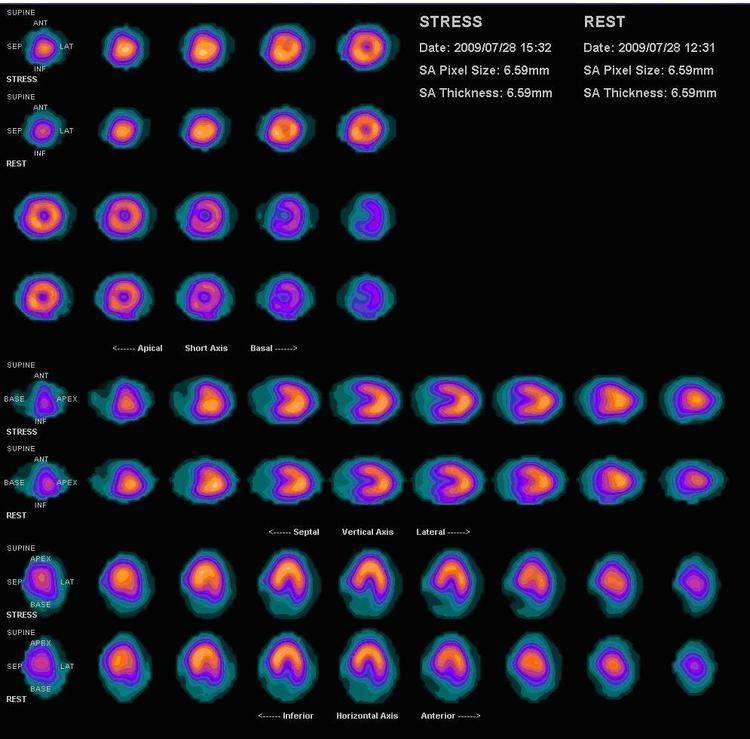ICD-10-PCS C22G OPS-301 code 3-704, 3-721 | MeSH D055414 | |
 | ||
Myocardial perfusion scan (also referred to as MPI) is a nuclear medicine procedure that illustrates the function of the heart muscle (myocardium).
Contents
It evaluates many heart conditions, such as coronary artery disease (CAD), hypertrophic cardiomyopathy and heart wall motion abnormalities. The function of the myocardium is also evaluated by calculating the left ventricular ejection fraction (LVEF) of the heart. This scan is done in conjunction with a cardiac stress test.
Planar techniques, such as conventional scintigraphy, are rarely used. Rather, Single-photon emission computed tomography (SPECT) is more common in the US. With multihead SPECT systems, imaging can often be completed in less than 10 minutes. With SPECT, interior and posterior abnormalities and small areas of infarction can be identified, as well as the occluded blood vessels and the mass of infarcted and viable myocardium.The usual isotopes for such studies are either Thallium-201 or Technetium-99m.
Major indications for a myocardial perfusion test
Risks vs. benefits
Experimental and epidemiologic evidence has linked exposure to low-dose ionizing radiation with up to 2% of solid cancers and leukemia. Workers are monitored and limited to 50 mSv annually in the United States, but medical patients are not typically monitored.
From 1993-2001, myocardial perfusion scans in the US increased >6%/y with "no justification," according to a commentary by Lauer. Mycardial perfusion imaging scans are "powerful predictors of future clinical events," and in theory may identify patients for whom aggressive therapies should improve outcome. But this is "only a hypothesis, not a proof," wrote Lauer. There are no randomized controlled trials to demonstrate any benefits, and there is a small but cumulative danger from radiation.
New radionuclides such as rubidium-82 reduce the radiation dose to the patient by a factor of 10 compared to technetium-99m. In the future, therefore, a complete myocardial perfusion exam may be achievable while maintaining a patient dose under 3 mSv. Stress-only protocols may also prove to be effective at reducing costs and patient exposure.
